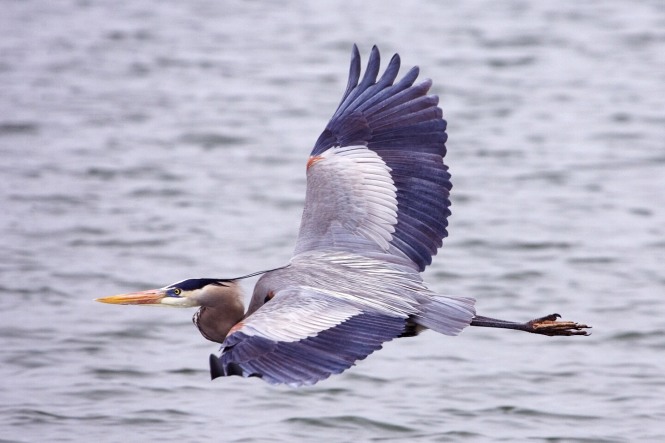A population in Florida holds the key to answer this question.
A species is a population of organisms that actually or potentially interbreed in nature, right? I wish it was that simple. This Biological Species Concept is just one of the many concepts that have been put forward to decide what is a species. Recently, more and more taxonomists are using an integrative approach in which they evaluate different species concepts before making a decision. In some cases, all concepts point in the same direction and the decision is easy. In other cases, different concepts lead to different taxonomic arrangements, resulting in heated debates. A recent study in the journal The Auk on the species status of the Great White Heron (Ardea herodias occidentalis) concerns the second scenario. Is it a distinct species or not?

A Great White Heron in Cuba © Charles J. Sharp | Wikimedia Commons.
Mixed Breeding Pairs
The Great White Heron used to treated as a separate species. But in 1973, the American Ornithologists’ Union decided to consider it a subspecies of the Great Blue Heron (A. herodias). This decision was based on several studies that reported the occurrence of mixed breeding pairs between Great White Heron and Great Blue Heron in Florida. However, these studies were largely based on anecdotal evidence. Nobody actually quantified the frequency of mixed pairs in this population. Therefore, Heather McGuire and her colleagues decided to study this population in greater detail. They collected data on morphology, genetics and breeding behavior to assess the species status of the Great White Heron.
Morphology and Genetics
Apart from the clear distinction in color, there were no significant differences in morphology between individuals with blue or white plumage. However, there were several individuals with intermediate gray plumage – often referred to as Wurdemann’s Herons – which could be hybrids between Great White Heron and Great Blue Heron. This conclusion is supported by genetic data. Based on a set of 13 microsatellites, the researchers uncovered two genetic groups: one consisting of three subspecies of the Great Blue Heron (fannini, herodias and wardi) and the other consisting of the Great White Heron. Moreover, intermediate individuals showed admixture from these two groups.

A Great Blue Heron flying over Rockport Beach Park, Texas © Alan D. Wilson | Wikimedia Commons.
Assortative Mating
The most convincing line of evidence comes from the breeding behavior. The researchers surveyed 114 nests in the Florida population. Most nests were occupied by pairs with the same color (white-white or blue-blue). Only a few nests contained mixed breeding pairs (white-blue). The observed pattern was significantly different from random mating. It seems that these herons choose their partner based on similar plumage color. In other words, they mate assortatively.
In addition, the blue and white herons breed at different times. This could explain the occurrence of some mixed pairs. Blue herons are relatively rare in the Florida population and might settle for a less desired partner instead of not breeding at all.
The Verdict
So what would you say? Based on the data described above, are the Great White Heron and the Great Blue Heron separate species? The authors believe that the weight of evidence tilts the scale to the Great White Heron as a separate species. They apply the General Lineage Concept of Kevin de Queiroz, which states that a species is a metapopulation with its own evolutionary trajectory separate from other such metapopulations. Indeed, the Great White Heron is separated from the Great Blue Heron by the following features:
- diagnostic plumage (white vs. blue)
- behavior (mate choice and timing of breeding)
- habitat (saltwater vs. fresh/brackish water)
The only issue is some gene flow between blue and white herons. But as this website shows, that shouldn’t be a problem…
References
de Queiroz, K. (2007) Species concepts and species delimitation. Systematic Biology, 56:879-886.
Eisenmann, E., Amadon, D., Banks, R.C., Blake, E.R., Howell, T.R., Johnson, N.K., Lowery, G.H., Parkes, K.C. & Storer, R.W. (1973) Thirty-Second Supplement to the American Ornithologists’ Union Check-List of North American Birds. The Auk, 90:411-419.
McGuire, H.L., Taylor, S.S. & Sheldon, F.H. (2019) Evaluating the taxonomic status of the Great White Heron (Ardea herodias occidentalis) using morphological, behavioral and genetic evidence. The Auk, 136(1):uky010.
This paper has been added to the Pelecaniformes page.
This morning i spotted what i beleave to have been a great white heron at tallington lakes any thoughts anybody